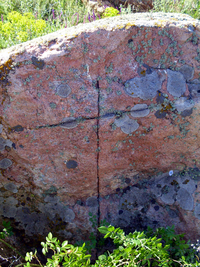You can help expand this article with text translated from the corresponding article in Ukrainian. (July 2023)Click [show] for important translation instructions.
|
This article includes a list of references, related reading, or external links, but its sources remain unclear because it lacks inline citations .(July 2023) |


Boundary Stones is an archaeological site in Ukraine since the Late Neolithic located in Kropyvnytskyi Raion of Kirovohrad Oblast. Consists of two series of 15 pairs of parallel stone monoliths - alley menhirs. Perhaps this religious building associated with the god of the Sun. Rows are oriented from east to west, the height of the parallel pairs of identical blocks. The highest second pair (1.50 m), height should be gradually reduced. The distance between adjacent rows of blocks increases. Qualified archaeological research of the monument was carried out.
Within a radius of 1-2 km from the Boundary Stones is located about 20 barrows (Neolithic, Bronze) and many of them destroyed. In the immediate vicinity - Grotto (shelter) "Devil's Cave."